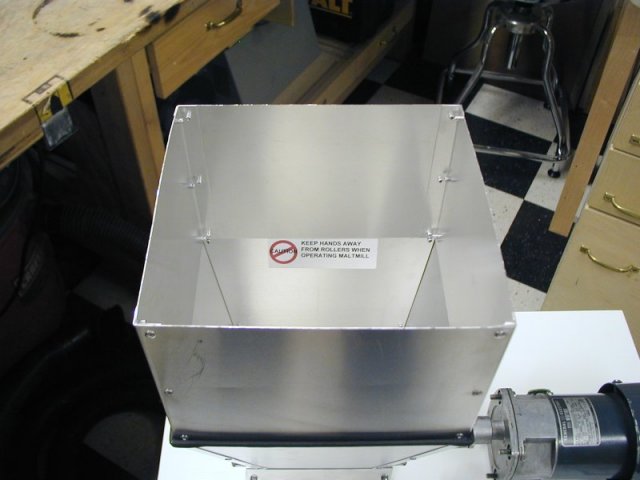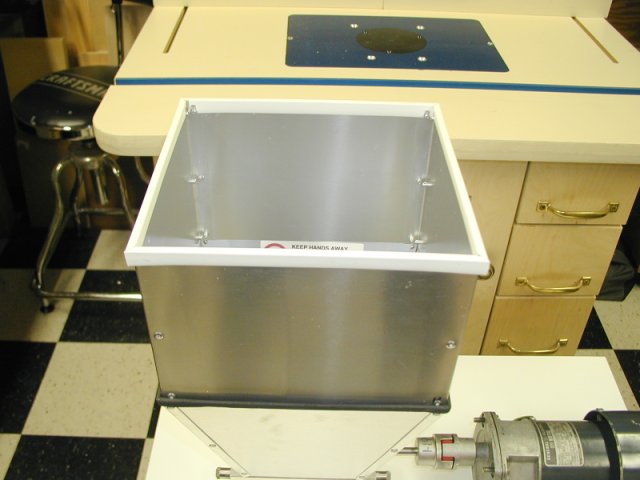The Barley Crusher I bought ~14 years ago came with a "7 pound" hopper, which definitely isn't big enough for even a five gallon batch.
I fabricated an extension using aluminum sheet and pop-rivets, then trimmed the cut edge on top with slip-on plastic report binders.
View attachment 708109View attachment 708110
View attachment 708111View attachment 708112
View attachment 708113
I used the shortest aluminum pop rivets with backing washers which worked out well. You can see where the rivet lines are holding the panels together.
The extension simply presses into the top of the original hopper which has its own edge guards that work to hold the extension in place. Never had it fall out.
The Barley Crusher eventually wore out the rollers in one direction, so after picking up a Cereal Killer (with its own 7 pound hopper) for barley milling duty, I reversed the BC rollers and now use
that mill (which works great again) strictly for small grains like wheat, oats and rye. The hopper extension fits the Cereal Killer's same as the BC, so I can use the extension with either mill.
hth!
Cheers!










